Since I was a kid growing up in Canada, everything was NTSC. And my first computer the Commodore 64 was of course NTSC based. My parents refused to get me a monitor, so I had to use the RF modulator to get it to work on a TV. In north America we had these RF modulators on the back of the TV’s to connect our systems up (Atari, Commodore, Nintendo, SEGA etc..)
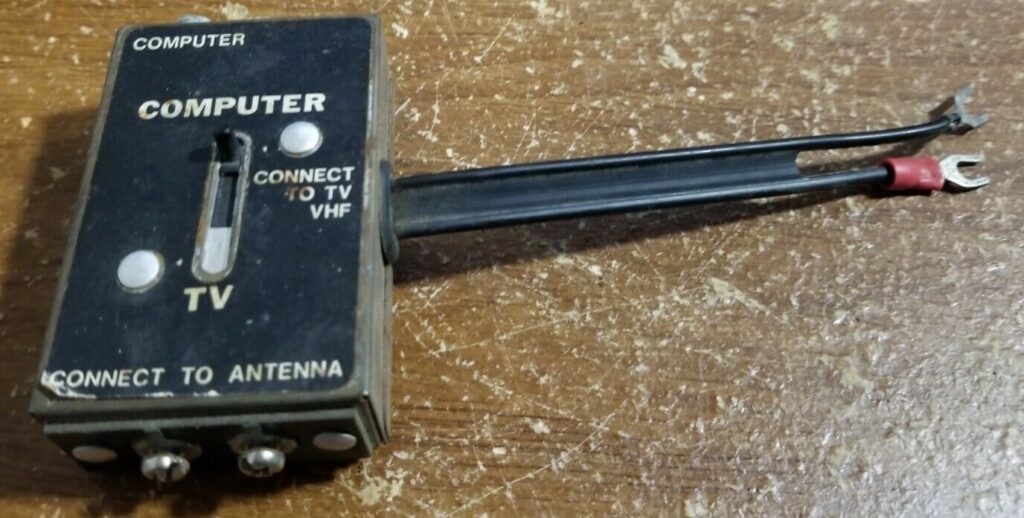
Vintage Atari 2600 Colecovision C64 Computer Switch Box RF Adapter
And the picture looked terrible, it was an antenna so it was suspectable to all kinds of RF emission interference, grounding issues and all kind of all around problems. It’s no wonder I had 20/20 vision as a kid, but it was absolutely destroyed because I was even forbidden to buy a proper monitor.
So thanks to patreon and ebay, I found this amazing bundle for 49GBP, a Commodore 64, plus tape drive. The catch being it didn’t include any proper cables, so I went to Tesco and bought an RF lead. I have this weird LG TV, a LG 50PC1D 50in Plasma TV. The original list price was an eye watering £1800! I got it used a while back for a more reasonable £130.
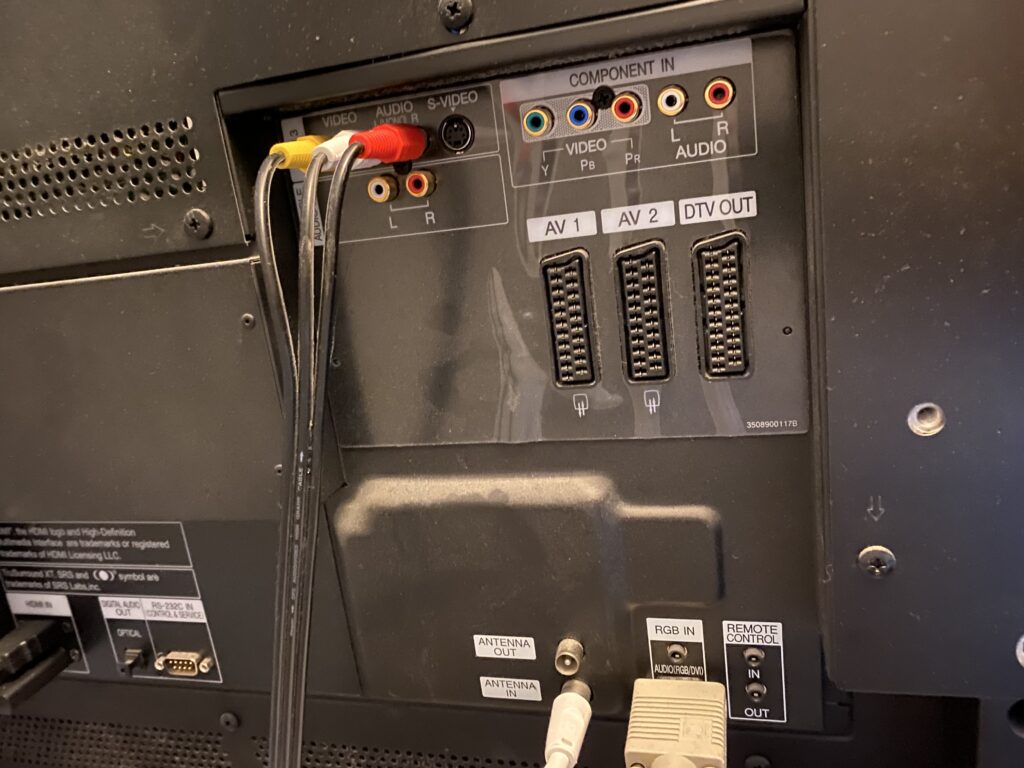
Lots of Inputs!
While I was at Tesco, I didn’t see any kinds of RF boxes. I was hoping I could just plug the cable directly from the TV into the Commodore C64, and it turns out that is exactly how it works.
With the cable plugged in, I was able to eventually get an image. I found out that the LG is more than capable of locking the RF image from the Commodore 64, and it looks awesome!
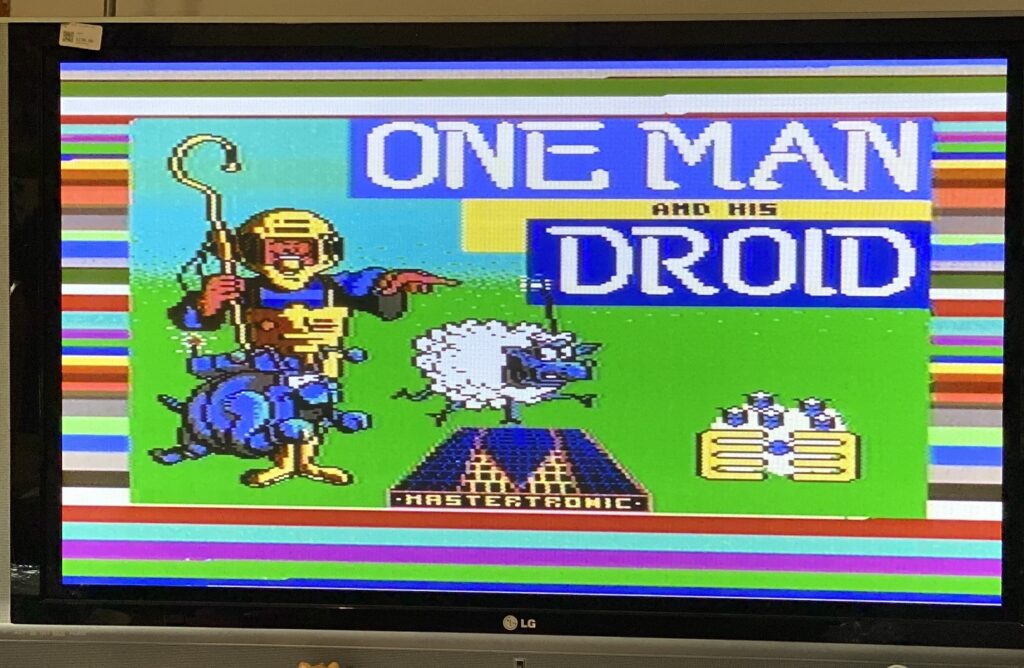
One man and his Droid over the RF on the LG 50PC1D
It’s a lot better than I was expecting. Clearly RF on a ‘modern’ TV works great.
Of course getting this to work wasn’t all that intuitive, and again probably because I’ve only delt with NTSC TV’s where the channel would be locked to either 3 or 4. Not so in Europe.
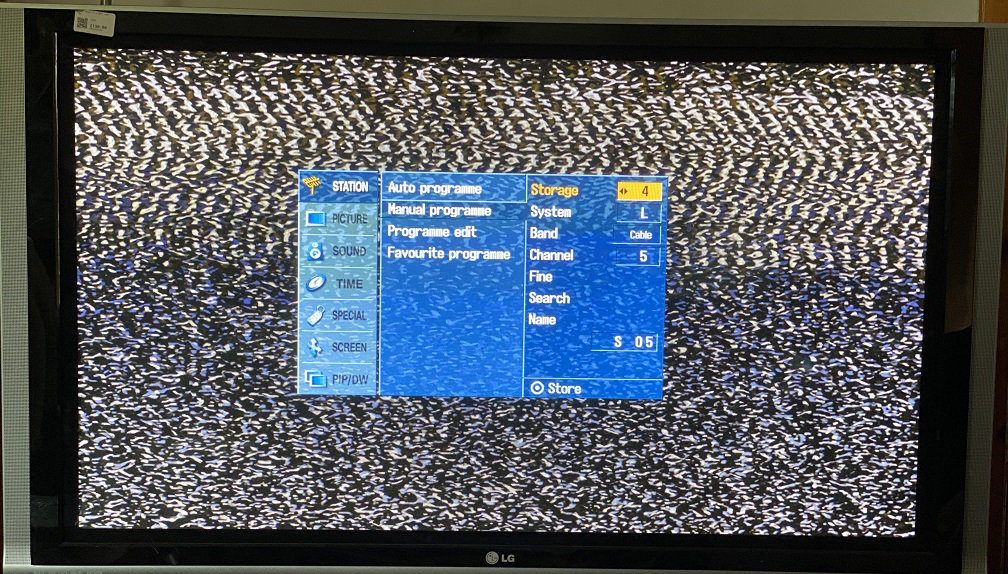
Channel 4
So setting the TV to channel for, and the band to ‘cable’ you can see the distinct border of the basic screen. The image of course is useless but you can see it trying. And that is because after letting the TV scan and find the picture on it’s own it’s actually channel 36.
Messing with the image options I found that there is 3 systems to choose from:
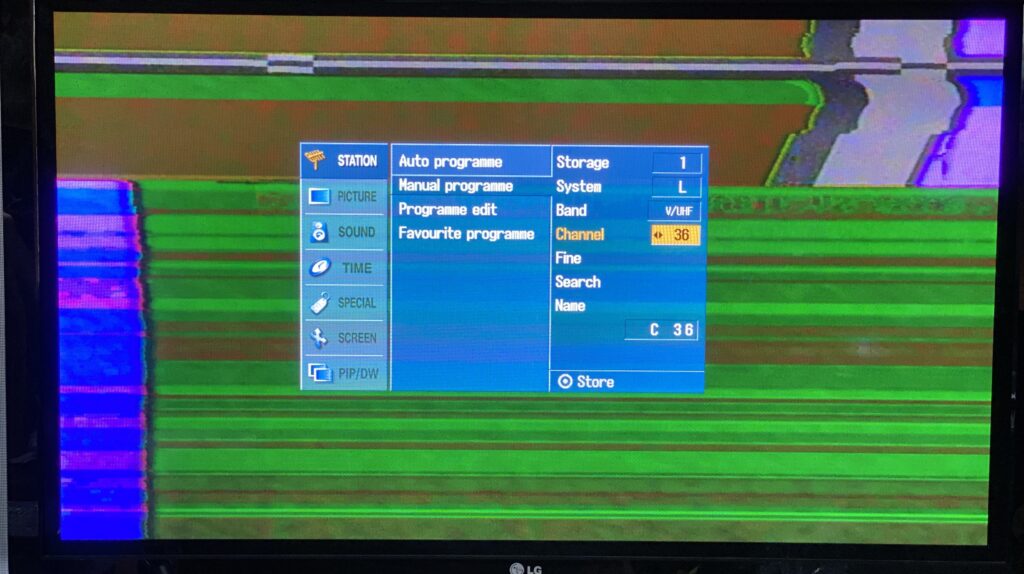
System L
You can see the image trying to form under System L, but it’s obviously no good
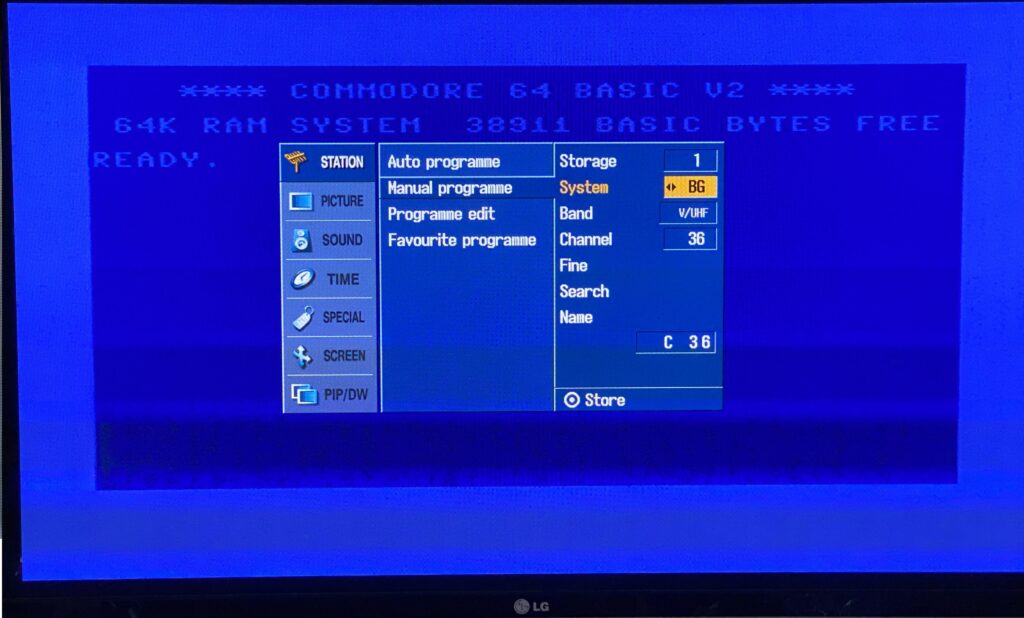
System BG
While the image looks better, the speakers erupt with absolute static. And the image is a bit faint, but immediately recognizable. It does look better in person however.
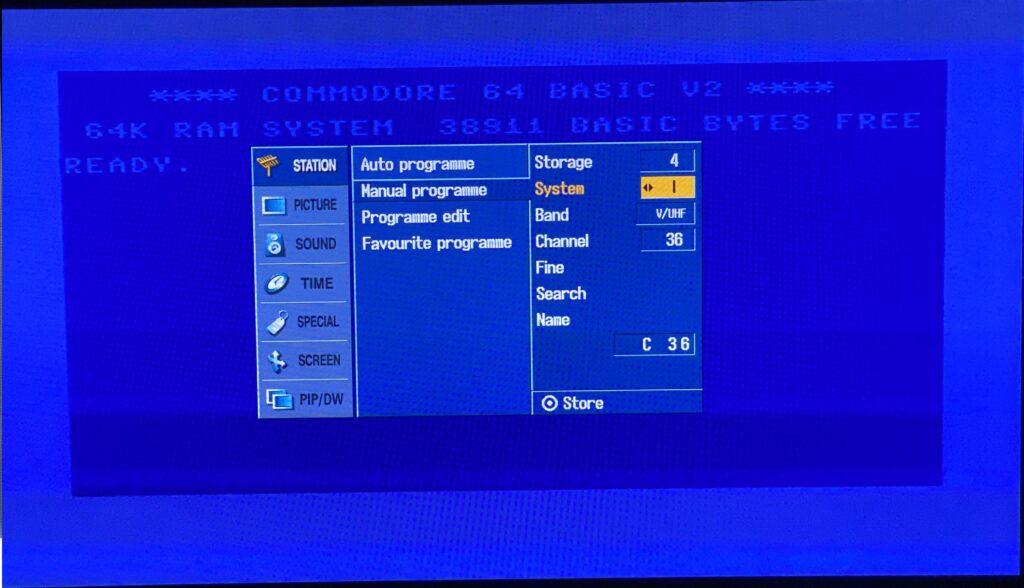
System I
And finally we have System I, over V/UHF on Channel 36.
I don’t know if this will help anyone trying to get anything working. Maybe it’s only relevant for people new to PAL territories like me.

The suffixes are the different CCIR channel allocations, with different bandwidths per channel, and different audio channel offset frequencies. CCIR B, G and I were used for PAL, whereas CCIR L was used by the SECAM system in France.
It looks like the RSS feed is broken at the moment, with Cloudflare error message when I try to access it.
I’m seeing the same thing here re: the RSS feed. I’m able to repro the error message (below w/ my IP removed) from my feed reader (a self-hosted system that uses cURL to download feeds), Chrome w/ NoScript, and an up-to-date Microsoft Chromium/Edge in stock configuration.
—
I got an error when visiting virtuallyfun.com/feed.
Error code: 1020
Ray ID: 7c185ad968e22d8e
Country: US
Data center: ord07
IP: x.x.x.x
Timestamp: 2023-05-03 12:02:24 UTC
I’ll have to check it soonish.
I need to publish the why it’s been going on. So much to fix.. but it’s slowly getting there
I’ve set it to an aggressive cache on cloudflare as I had someone hitting it every second, and it was causing a bit of havoc. I think it should be doing something now.
System I is for the UK, both VHF and UHF
System B is for VHF, System G is for UHF, in most continental European countries.
System L is for France.
System L uses positive modulation, while system I, B and G use negative modulation.
Note that France used the SECAM colour system, while the rest of Europe used the PAL system. It was commonly said the systems were incompatible due the PAL/SECAM difference, but the real incompatibility was the L system.
In the past, Greece used SECAM on top of the B/G black&white sytems. A television set from example, the Netherlands, which was for B/G PAL, would receive B/G SECAM signals only in black&white, as it understand B/G but not SECAM.
The same can be said about the PAL/NTSC difference. Countries that uses NTSC commonly use it on top of an incompatible black&white system.
The difference between continental European G and UK I broadcasts is the spacing between the video and the audio channel.
I have seen RF modulators back in the days, like the one that came with a camcorder, to have a switch between G and I.
PAL RF Modulators also commonly have a potmeter to adjust the channel. Such a potmeter is also found at the back of a PAL VCR.
Thanks! as someone who grew up outside of Europe, it’s been a bit overwhelming when it comes to this old stuff, It’s a parallel univers of incompatible standards.